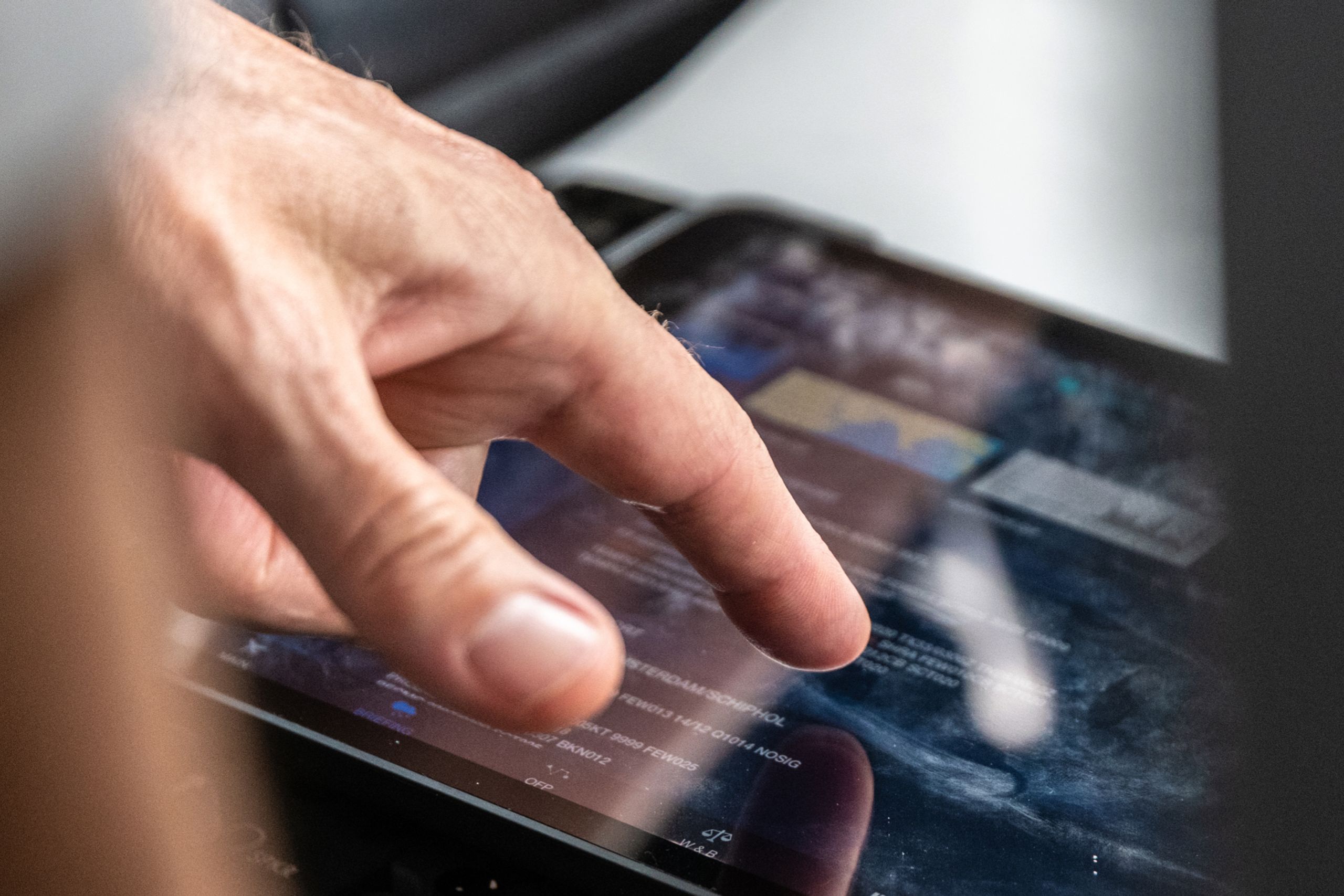Pathfinder - the great leap forward in schedule optimisation
At its core, Pathfinder is a schedule optimisation tool. It's a decision support tool that helps the Operations Control Center find the optimal combination between aircraft and flights a few days before departure.

What is Pathfinder?
At its core, Pathfinder is a schedule optimisation tool. It's a decision support tool that helps the Operations Control Center find the optimal combination between aircraft and flights a few days before departure. Pathfinder uses large quantities of available data points to create a flight schedule for KLM that is robust, cost-efficient, able to minimise delays and is as environmentally friendly as possible. We started building Pathfinder initially in partnership with the Boston Consulting Group and since 2019 we continued the development entirely in house. It uses large quantities of available data points to create fleet lines and optimise flight schedules.
How is Pathfinder a leap forward in schedule optimization?
We’ve had legacy tools since the '80s that could handle only a fraction of the problems Pathfinder can solve. We were always perfectly capable of building a schedule from an operational perspective. Back then, we scheduled our planes as they would fit into the maintenance routines and comply with the safety requirement. But with Pathfinder, we can take this a step further. The number of data points we consider is a multitude of what we used to have. The maintenance routines no longer bind us.
We look at costs components like fuel and the costs of each individual passenger. We calculate the probability and costs of possible delays for each flight and see. How many passengers should we have to rebook, what would this mean at the gates, and what does this mean for crew and ground operations?
Pathfinder engine combines the operations research techniques and AI prediction models. With Pathfinder, we can build relationships between a multitude of data points. Too many for a human being to process alone. With our modelling, we can consider operational rules, maintenance planning, crew rosters, passenger behaviour, delay predictions and look at multiple financial components. Because of the mathematical principles behind the model, we can build a more robust schedule. This is truly a leap forward, since a lot of this information was absent in the tooling before.
These are not trivial solutions
With Pathfinder, we bring predictability in the hectic world of the airline operations. What do we need in the coming days, how many passengers can we expect, what it means for our fleet and how much it will cost us as a company. We optimise for the best schedule for our customers, staff and fleet, and what is economically healthy from a business and sustainability perspective. We try to minimise costs, so we look at the expense of fuel and the cost of operation, and in doing so, we also minimise carbon dioxide emissions.
This means a better balance between operations and business. How does this impact the organisation?
We were perfectly capable of planning our fleet before Pathfinder. But now we see we took too few factors into account, which harmed our business. With Pathfinder, we’re able to merge schedules of both our Embraer and Boeing 737 European fleet and increase flexibility of our schedule. More efficient choices of an aircraft to fly a specific flight led us to saving 3.000 tons of carbon dioxide every month.
Even though we could do a lot of planning and schedule optimisation before, with Pathfinder we were able to prove the actual financial results with the finance department.

How did the users respond to Pathfinder?
We created Pathfinder with the end-user in mind - our KLM colleagues at the Operational Control Center. The main challenge is that even though Pathfinder brought many extras to them, they were perfectly fine doing their job without it, so we needed to spark their interest. To get them to change their mindset after working in a specific way over the last 10 to 20 years.
We had the possibility to work together with our end-users and show them small iterations of the tooling, and they gave us valuable feedback along the way. Looking from that perspective, Covid-19 was a blessing in disguise for us. Given how big of the challenge we as an airline faced during the pandemic, our users and stakeholders became open to try out new ways of working and new features in the tool that contributed to the financial savings. This moment gave us time as a team to repurpose the tool to the new reality and ensure that it is used every single day.
With Pathfinder, we showed the end-users that the things they thought impossible were possible. We showed them how the tool saved valuable minutes during a workday and how they had to send fewer emails and not print various lists. Let alone the fact that millions of euros saved by Pathinder is the contribution to the KLM recovery that our users and our product team made together. That’s how we added value to one of the most critical processes at our airline.
What are the technical challenges in Pathfinder?
We work with the NP-Hard problems, known from the computational complexity theory. As we increase the size of the problem, such as a more extensive schedule of flights, the time we need to find the best solution from the schedule increases. To tackle such problems, we had to really understand the problem mathematically and understand the model's constraints. We tried to make the model smaller, make it tighter and faster. We did this in such a way that we reduced the run time of the model from 20 minutes to 5 minutes.
These are not trivial solutions. We needed to build a model that handles the dynamics and complexity of our operation. We don’t only monitor the flow of our fleet, but we also monitor the flow of passengers; we have to observe how the crew members go from one duty to another. Modelling and tracking all these flows at once is a big challenge. The biggest challenge, however, is not the technology itself, it how it is used on a day-to-day basis. Running an airline is complicated, especially if you're working in the Operations Control domain. It's a balancing act: you want your passengers to make their connections, but you don't want your flights delayed, and you want to keep control of the costs. Using the technology to balance these criteria is the real challenge.
Why is this project so enjoyable to work for?
In the past 2 years, Pathfinder was developed with a small product team. This team operated as a startup within the corporate walls of KLM. Everyone was motivated to deliver results, to look beyond the corporate constraints, and explore what was possible with our ideas. We didn’t wait for someone to tell us what to do. We went one step ahead in owning the problem, proposing solutions and developing them rapidly, so we could test them in operations.
Pathfinder is part of a suite of tools with which we can predict and monitor various disruptions in our services. There are always new types of disruption that challenge our current model, and we want to find better ways to support these new and unknown types of disruption without impacting the passengers.
TripPlanner, the system behind our ticket prices. And more

